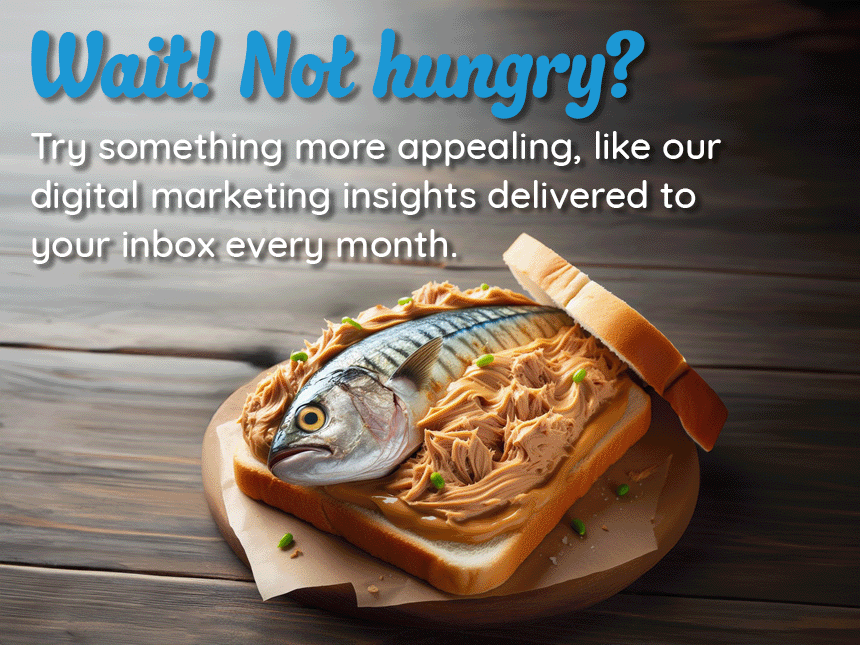Cost-per-Click vs. Cost-per-Conversion vs. Cost-per-Tactic
We’re big believers in the effectiveness of paid search advertising.
But you have to fully understand the metrics to get the most out of it. There are a lot of cost-per-something numbers passed around the digital marketing community. So we thought we’d take a moment to break down the differences between:
- cost-per-click
- cost-per-conversion, and
- cost-per-tactic
What is Cost-per-Click (CPC)?

Why Count Clicks Instead of Impressions?
Don’t fall into the trap of counting impressions. Impressions are the amount of people who were shown your ad. It doesn’t mean they saw it, it doesn’t mean they read it even if they did see it. It only means it was presented to them. In paid search that could be in the form of a Google AdWords ad appearing within a search result page. In banner advertising that could be a more graphical ad appearing on a website other than yours. The latter option is more beneficial in that you are at least potentially branding your organization or offering to the people seeing it. But how do you even know if that audience is your target market?
Count the clicks. A click is anyone who clicks on an ad to be taken to your destination page. A click means someone read the ad, thought it was appropriate to his or her need, and clicked it to learn more. A click is a visit to your site, a possible new prospect. It’s getting a foot in the door.
Cost-per-click (CPC), or pay-per-click (PPC), is the amount of money you pay each time a user clicks your ad. CPC is an important metric since it provides insight into how well your ad campaign is performing and helps you gauge your return on investment.
The next obvious question is what did you get for those costs? Do any clicks fill out a contact form or perform some other conversion as you’ve established on your site?
Cost-per-Conversion

We’re customer acquisition specialists. Therefore, we don’t consider a job complete until we’ve secured a new sale for a client. That mission requires us to focus heavily on what we’re offering a site visitor to entice our desired action.
Getting prospects to your website or landing page can be useful in and of itself. You can introduce them to your brand, begin to sell to them, drop a cookie on their computer to start retargeting to them.
But in most cases, what you’ll really want is a conversion. You’ll want them to provide their contact information to you. This can be in exchange for some type of free asset, or to receive more information, or to speak to a specialist, etc..
Therefore, the next step in your metrics quest for determining an effective campaign is to measure your cost-per-conversion – how much did you pay for each new lead?
This is obviously going to be higher than cost-per-click. This is potentially someone with real interest, whom a sales person can now reach out to. We’ve seen costs-per-conversions in the $20 ballpark, as well as north of $150 per conversion. Depending on the cost of your offerings and the close rates of your sales people, you’ll need to determine what an acceptable cost-per-conversion is to calculate the return on investment value.
And once you have those numbers, you can begin to look at the next level of metric.
What is Cost-per-Tactic?

If you are running multiple tactics – Google AdWords, maybe Bing paid search, banner ads, retargeting, Facebook – you need to know which are worth continuing. But the numbers may be misleading.
As mentioned at the beginning of this article, we believe whole-heartedly in the power of paid search. That’s because the people you’re advertising to are actively looking for the thing you’re advertising. Contrast that to someone reading an article on a news site – that person isn’t necessarily interested in leaving the article to click your graphic ad.
Because of this, your paid search efforts may appear to bring in more revenue than other tactics. But that’s why it’s important to understand cost-per-tactic, which is the cost you’re paying for each individual tactic.
Facebook may be your lowest revenue generator by sheer dollar amount. But you also may be paying the least into it. The cost-per-click is probably measured in cents not dollars, and if your landing page is effective, you may not need to make much to recoup your investment. In fact, Facebook may provide your best ROI, which means there’s no reason to stop those efforts because it’s paying back more than it’s costing.
Conversely, you may have another tactic that generates the most revenue, but consider what you’re contributing to it and measure your cost-per-click and cost-per-conversion. What if it’s earning the most money because it’s costing the most money? What if it’s actually costing you more than it’s making? Even if it’s your highest revenue generator, if you’re putting more in than you’re getting out, is that worth it? You may need to adjust the effort or consider different efforts.
This is the power of understanding your cost-per-tactic. You can see which efforts make you the most profit, and can both focus more on them and/or adjust your other efforts until you see better numbers.
If you’re seeking expert guidance to optimize and manage your digital advertising campaigns for maximum impact and ROI, don’t hesitate to reach out to us. We’re here to help you achieve your marketing goals with tailored strategies and proven results.



